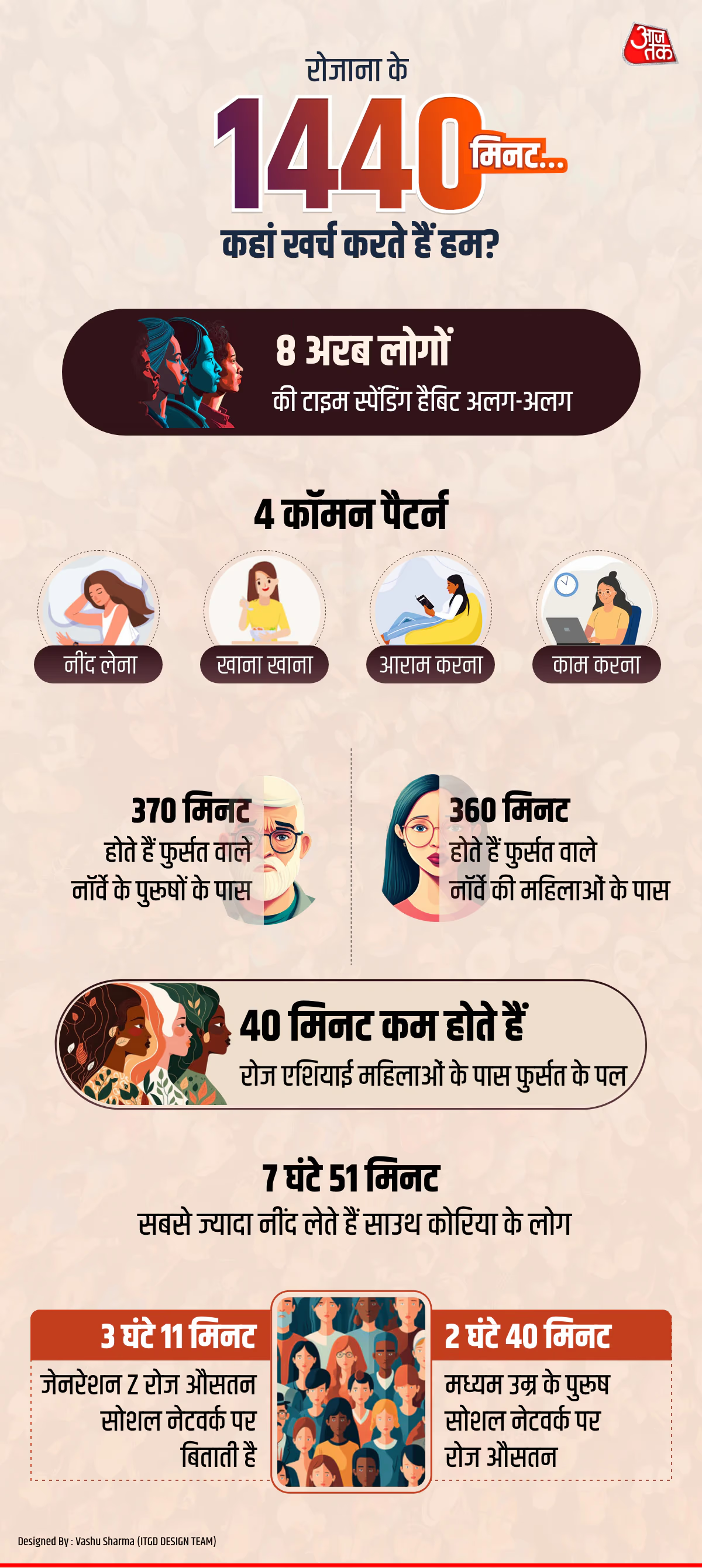Larsen & Toubro (L&T), India's largest construction company, recently saw its chairman, S.N. Subramanyan, make a statement suggesting employees should work for 90 hours a week, including Sundays. This comment has ignited a widespread debate on whether working more hours is wise or if 'smart work' should be prioritized. Social media is abuzz with memes regarding Subramanyan's statement, with mixed reactions from the business world. Mahindra Group's Chairman, Anand Mahindra, responded, emphasizing quality over quantity in work.
Sanjsiv Puri, ITC's Chairman, advocated for a flexible work culture, suggesting that instead of setting strict work hours, companies should aim to have employees join the journey with enthusiasm and strive for innovation. Previously, Infosys co-founder N.R. Narayana Murthy also proposed a 70-hour work week, which drew considerable criticism on social media. But how do people around the world spend their time? Several studies reveal intriguing patterns of time utilization across different demographics.
Explore More:
The Global Time Use Patterns
Every person on Earth has access to the same 24 hours, or 1,440 minutes, each day. Yet, how this time is used varies drastically due to diverse lifestyles influenced by jobs, geographic locations, and personal habits. In many modern jobs, people spend 14 to 15 hours in the office. Historically, until the 19th century, there were no standardized working hours.

Source: aajtak
Industrialization in the 19th century increased working hours to as much as 150 hours a week. As economies improved and awareness about human rights grew, work hours gradually decreased. In 1870, American working hours were about 3000 annually, dropping to around 1700 today amid a typical 5-day work week, averaging 7 to 8 hours daily. According to economic historians Michael Huberman and Chris Minns, Germany's work hours have decreased by 60% since 1870. The UK's reduction is about 40%. Legislative changes have meant people now work the hours they once did from January to July across the entire year. Changes are more pronounced in industrialized nations, while poorer countries see slower progress. In wealthier nations, workdays are often capped at 4 days a week, with daily work hours around 6.
Dive Deeper: 'If possible, work less...' Former HCL CEO's take on the 90-hour debate.
Extended Work Hours in Developing Nations
Conversely, in developing countries like India and China, formal sector jobs follow set work hours. However, a large informal sector exists due to the huge population, where work standards are less defined. Employees often need to extend their hours beyond standard norms, contributing to significant personal workload and time investment. Labor laws have influenced changes in time management, as seen with increased holidays for employees.
Globally, employees average about 240 working days annually, with 120 days reserved for weekly breaks and holidays, impacting lifestyle shifts. In India, for example, there's consideration to increase maternity leave from six to eight months for women. Family leave for government-employed women is up to two years, enhancing opportunities to balance work and family life. Similarly, annual leave in the UAE can range from 30 to 100 days.

Source: aajtak
Factors Influencing Time Usage
While everyone experiences activities like sleeping, working, eating, and leisure, other habits significantly vary based on individual convenience. Various factors shape these habits:
1. Gender Disparity
Tooling people's habits are various factors—economic conditions, social norms, and notably, gender disparity. In most nations, men enjoy more leisure time than women. According to Ourworldindata, Norway observes the smallest leisure time gap between men and women, with men enjoying 370 leisure minutes daily compared to women's 360 minutes. Conversely, Portugal demonstrates over a 50% gap, with men enjoying 280 leisure minutes while women have 200. In Asian countries like India, men get about 280 minutes of leisure time daily, whereas women get around 240 minutes. More downtime allows individuals to focus on physical health, fitness, and mental wellbeing, influencing their overall lifestyle and happiness.
Know More:
2. Age Factor
Age influences time use significantly. As people age, they become more socially active, joining social, religious, and cultural activities, altering their time utilization patterns. Today’s youth spend substantial time online, engaging with digital content. Forbes reports Generation Z (ages 16-24) logs about 3 hours and 11 minutes daily on social networks, contrasting middle-aged individuals’ 2 hours and 40 minutes. Older demographics show lesser interest in social media, often favoring richer social lives.
As individuals age post-30, they gradually transition from spending time with colleagues to prioritizing family, partners, and children. Post-60, less time is spent with colleagues, shifting focus to being more socially engaged with family. Post-retirement, habits like solitude, health-focused lifestyles, and routine changes become predominant.
Sleep Cycles Vary Across the World
Typically, daily routines are segmented into work, rest, and leisure. Globally, people dedicate a significant portion of their day to sleep. Sleep habits vary globally—South Koreans average 7 hours 51 minutes of sleep, while Americans and Indians tend to sleep more, averaging 7 to 8 hours.
Varied Work and Meal Times
Work hours also differ significantly. For instance, China's and Mexico's workers average longer daily hours than Italy's and France's workforce. Cultural differences explain these variations; French individuals spend more time at meals than their British counterparts. Culinary traditions in France, Greece, Italy, and Spain lead to extended dining times, while Americans typically invest only 63 minutes daily at the table. Sporting events, gaming, and cultural activities further diversify time spent, especially in affluent countries where people engage more in extra activities. Meanwhile, in poorer or developing nations, more time is spent on secondary or paid jobs, reducing leisure periods.




